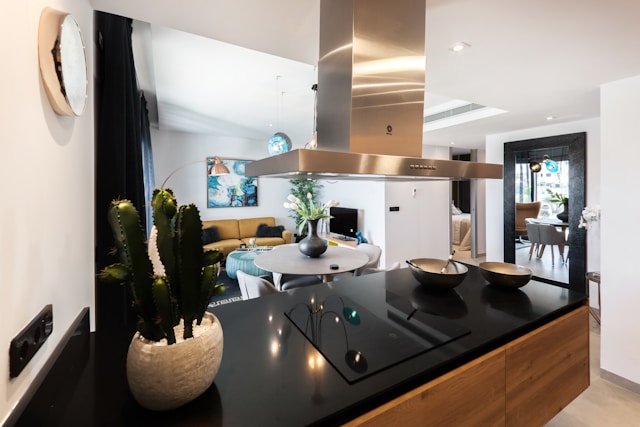This is a sponsored blog post.
Hey everyone! I keep hearing about how exciting it is to become a homeowner, whether I’m buying a flat in Sydney or a beachfront bungalow on the Gold Coast. No matter which one I choose, the excitement of getting the keys to my new home will always be the thing that I remember most.
That being said, this beautiful dream does have a darker side, just like every other big choice in life. And today I’m going to talk about the many hidden costs that exist. I really want to shed light on these costs and help you avoid the feared budget blowout. Let me tell you ahead of time that planning ahead is the best gift you can give yourself in the future, whether this is your first buy or just the next step towards something bigger and better.
Unexpected Start-up Costs
It is easy to fall head over heels in love with your dream home and its price, but it is also easy to forget about the other costs that come with it. The First Home Owner Grant might have helped you save up the down payment. What’s the small print that comes after?
- Stamp Duty: The pound-foolish stamp tax is the “big one” that most people forget about. It is a government tax, and the amount changes by state. For instance, in New South Wales, on an $800,000 home, it could be a huge $30,000. And for first-time buyers, it’s even better.
- Conveyancing Fees: And then there’s the conveyancing fee. Someone has to take care of the paperwork and get the formal OKs to say, “It’s all good.” Early on, hiring good first-home buyer lawyers who are experts in the area can save you a lot of trouble later on. This is because they handle the contract, searches, and payment in a way that is easy for people who are new to the market.
- Inspection Costs: Another thing that is easy to forget is the cost of the inspection. A good building and bug report could cost $500 to $1,000, but if you don’t get one, you might find out about the termites and other problems with the structure after you’ve already signed.
- Lender’s Mortgage Insurance (LMI): Lender’s mortgage insurance, or LMI, is what you’ll need if you borrow money and your down payment is less than 20%. Just a few more grand will be used to protect the bank, not you.
All of these nasty little costs that show up at the beginning can easily add 5 to 10 per cent to your total cost, so they need to be taken into account right away to keep your dream home from turning into a nightmare.
Ongoing Loss of Homeownership
Figuring out how to live in a new place costs a lot, and unlike other moving costs, these are charges that you have to pay every month. You will be “boss” of your new home when you own it, but you will also have rental duties that you didn’t have when you were renting.
- Council Rates: When it comes to fees, council rates are the most important thing. Depending on your suburb, they cost anywhere from $1500 to $3000 for things like park maintenance and trash pickup by the city. Some places might pay more than others. For example, the centre city of Melbourne might charge more than other areas, while rural areas might pay less.
- Water Rates: Water rates add another layer, especially in parts of Queensland that are suffering from drought and may charge high fees for using the water.
- Strata Fees: These are the fees you have to pay if you live in an apartment or townhouse that is part of a strata plan. They pay for repairs, insurance for shared areas, and sometimes even protection and gardening. Set aside between $2,000 and $5,000 a year, and remember that you may have to pay extra for big fixes like fixing a roof that leaks.
- Utilities: There is no landlord to help pay for your internet, power, and other costs, even though utilities may seem easy. With energy prices fluctuating all the time these days, adding solar panels might be a good idea in the long run, but it costs a lot up front.
These ongoing costs tell us that owning a home is a long-term process, not a quick one. Taking care of your money is important if you want to enjoy the ride.
Repairs and Maintenance Can Sneakily Drain Your Budget
Of course, the weekend is a great time to do some light DIY! Many people think that keeping a home is not fun, but Serge, the home improvement economist—I mean, the person most people go to for home advice—told me that this is not true. He says, “As the owner, I can say for sure that there is!” For those who aren’t interested, it feels like a leaky faucet. For those who don’t know, the sad truth is that ignoring these taps for a long time only makes them more likely to break next. And the next one usually costs a lot.
If you can avoid something, it will save you a lot of trouble. A few hundred dollars will get you even the most basic care, like having your air conditioner serviced or your gutters cleaned. Because of our harsh summers and unpredictable weather, things really do wear out quickly in Australia. For example, a new hot water system costs between $1,000 and $3,000. In Brisbane, roofs need five-figure repairs after Brisbane hail.
Pest control is what Simon really means when he talks about an “uncovered gem”. Termites, which are known as “silent killers” in Australia, require checkups every three months, which cost $300 to $1,000 each time. In bushfire-prone areas, like the Blue Mountains, it’s more than just “nice to have” to have materials that are fire-resistant, reduce fuel, and clear out vegetation. These materials could cost a few thousand dollars because they are required by insurers. Finally, improvements won’t make things look better either; even a quick coat of paint in the kitchen will cost you a lot if you have no say over the project.
The plan-do loop on maintenance is, of course, the biggest time-waster. Save 1% to 2% of your home’s value every year. You can think of it as a castle pesticide store that will help you sell it later for more money.
Insurance and Safety: Don’t Skimp on Those
Some things that give you peace of mind don’t cost anything, but your home insurance does. This is necessary to protect assets, but the prices are higher than expected because Australia’s weather is like a time bomb.
- Home and Contents Insurance: Everyone who owns a home needs home and belongings insurance. This protects you against fire, theft, and storms, among other things. The rates, which could start at $1,000 a year, go up even more in parts of northern New South Wales that are prone to flooding.
- Building Insurance: If you live in a strata, you need to have building insurance, which covers you twice as much.
- Landlord or Pet Insurance: Adding landlord insurance or pet insurance is something else to think about if you want to rent a room or if your pet causes trouble.
Underinsurance, which is probably the worst kind, is something that everyone forgets about. A lot of Australians don’t think about how much it will cost to rebuild, which leaves them open to risk in case of a disaster. This is very important now, because of climate change and natural disasters like bushfires and cyclones, when insurance rates have gone through the roof, with some places seeing 20% increases.
Talking to experts, like Gold Coast financial advisors, is a great way to get custom coverage at a good price. This is especially true in coastal areas where salt air increases the risk of corrosion. The main point is that shopping around, bundling policies, and reviewing them once a year can make a big difference in how well you are covered at a good price.
How to Prepare for the Unexpected
In fact, everyone does accept the unexpected, even though no one wants to. And when that happens, owning a home is the only thing that makes your wallet feel lighter.
- The main home exemption lowers the amount of capital gains tax you have to pay, but it could still be a problem if you sell a rental property.
- Moving is hard work, and paying for it is even worse. Things like moving vans, furniture, and cleaners can cost $2,000 or more.
- A lot of people think that interest rates can and do go up. When this happens, your mortgage payments go up a lot, making it hard to pay your bills.
- Putting in smoke alarms and getting rid of asbestos in older homes seem like health and safety improvements that aren’t immediately clear.
- Heritage buildings, like those in Adelaide, cost more to improve because they have to follow certain rules.
As always, the key is to build a safety net—tip: save enough for three to six months of costs in case of an emergency. Keep up with grants and rebates that are out there, like government benefits for energy-efficient homes, to help lower your costs.

Hi there! I am Emily Evert, the owner of Emily Reviews. I am 28 and live in a small town in Michigan with my boyfriend Ryan and our two pugs. I have a large family and I adore my nieces and nephews. I love reading memoirs, and learning about child development and psychology. I love watching The Game of Thrones, Teen Mom, Sister Wives and Veep. I like listening to Jason Isbell, John Prine, and other alt-country or Americana music. I created Emily Reviews as a creative outlet to share my life and the products that I love with others.
This post currently has no responses.


















Leave a Reply